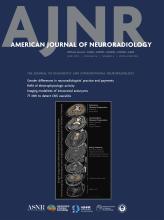Case of the Week
Section Editors: Matylda Machnowska1 and Anvita Pauranik2
1University of Toronto, Toronto, Ontario, Canada
2BC Children's Hospital, University of British Columbia, Vancouver, British Columbia, Canada
Sign up to receive an email alert when a new Case of the Week is posted.
June 7, 2018
Subperiosteal Osteoid Osteoma
- Background:
-
Osteoid osteomas are benign bone tumors that typically occur between the ages of 10 and 25 years.
-
They have a characteristic lucent nidus <1 cm in diameter and a surrounding solid periosteal reaction.
-
Most osteoid osteomas occur in long tubular bones of the limbs (especially the proximal femur).
-
The spine is involved in approximately 10% of patients, predominantly in posterior elements.
-
The most common location is in the cortex, with intramedullary, subperiosteal, and intra-articular lesions less commonly seen.
-
- Clinical Presentation:
-
Severe pain, worse at night and dramatically relieved by salicylates (eg, aspirin)
-
When located along the spine, they cause painful and rigid scoliosis, concave on the side of the lesion.
-
- Key Diagnostic Features:
- The nidus is usually <1 cm in diameter and is typically ovoid. Target calcification may occur in the center of the radiolucent nidus. It shows a solid periosteal reaction with cortical thickening.
- Intracapsular lesions are associated with much less reactive sclerosis.
- Spinal lesions may produce an ivory pedicle/neural arch.
- In dynamic MRI, nidus contrast uptake starts in the arterial phase and is higher compared with the surrounding normal bone marrow. In patients with osteoid osteoma located in atypical sites, dynamic MRI increases nidus conspicuity.
- Typically, the T1 perfusion curve in osteoid osteomas shows rapid uptake with slow washout.
- Differential Diagnoses:
- Osteoblastoma: lesion size >2 cm
- Brodie abscess: lacks changes on perfusion
- Treatment:
- Treatment includes CT-guided percutaneous radiofrequency ablation.
- In surgically accessible lesions, wide en bloc excision can also be done.











